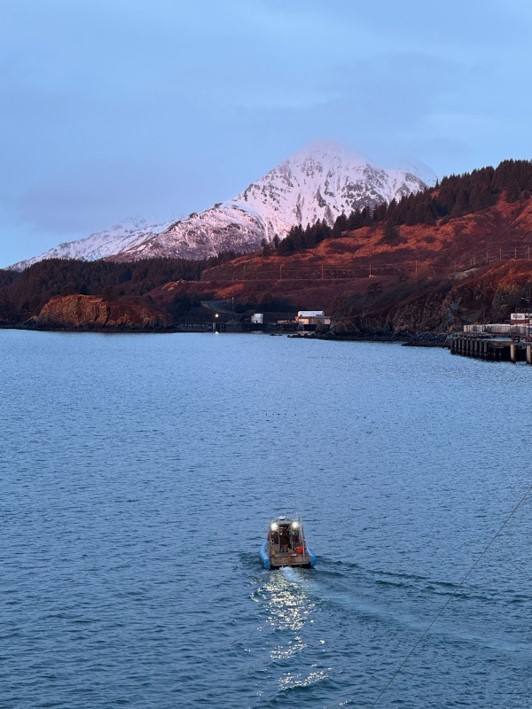
National Centers for Coastal Ocean Science (NCCOS) scientists completed the first Gulf of Alaska harmful algal bloom (HAB) sampling cruise aboard NOAA Ship Oscar Dyson to measure Alexandrium catenella cyst abundance in seafloor sediment samples. Alexandrium is a HAB-forming dinoflagellate (a type of swimming plankton) that survives the cold winter months by forming dormant seed-like cysts that accumulate in ocean sediments each fall. When water temperatures warm, the cysts germinate into adults that repopulate the water column and are transported to new areas by ocean currents. Blooms of Alexandrium can produce potent neurotoxins that may accumulate in shellfish.
Combining the Alexandrium cyst measurements with environmental and meteorological data will fill knowledge gaps on HAB dynamics in the region. This information will help researchers and managers understand the influence of HAB cyst abundance on where and when blooms occur. Kodiak residents have long traditions of harvesting shellfish for subsistence and cultural practices, and this research will help predict when HABs will be present in or near shellfish beds. The goal of this project is to produce a yearly HAB forecast to inform communities and coastal managers of the location and severity of toxicity risks in the surrounding waters of Kodiak.
Consuming contaminated shellfish can cause a potentially fatal illness called paralytic shellfish poisoning (PSP). Regional climate change is increasing the potential for large, toxic Alexandrium blooms in coastal waters. The Kodiak Area Native Association (KANA), a nonprofit organization that provides health and social services for the City of Kodiak and six Alaskan Native villages, has reported elevated toxin levels earlier in the spring throughout Chiniak Bay. In recent decades Kodiak has experienced outbreaks of PSP at a higher rate than other regions of Alaska.

Over 11 days at sea, volunteers from KANA and the Alutiiq Pride Marine Institute joined NCCOS scientists in collecting surface sediment samples and water quality data from 78 sites in the Gulf of Alaska, around and adjacent to the Kodiak archipelago and the lower Kenai Peninsula. This research survey was the first time NOAA and its partners have attempted a cyst survey in the Gulf of Alaska. Throughout this project, feedback from coastal harvesters and shellfish farmers through KANA and Alaska Sea Grant will inform how our research can best serve the community.
NCCOS- coordinated HAB forecasting programs have been successful in the Gulf of Maine, the Gulf of Mexico and Florida, and Lake Erie, where forecasts help protect public health.
This work is supported in part by the NCCOS Monitoring and Event Response for Harmful Algal Blooms (MERHAB) Research Program and is part of a larger project, “HABs in the Kodiak Archipelago: HAB Monitoring and Toxin Testing Support Community Subsistence Harvesting and Forecasting Model Development” taking place through August 2028.
